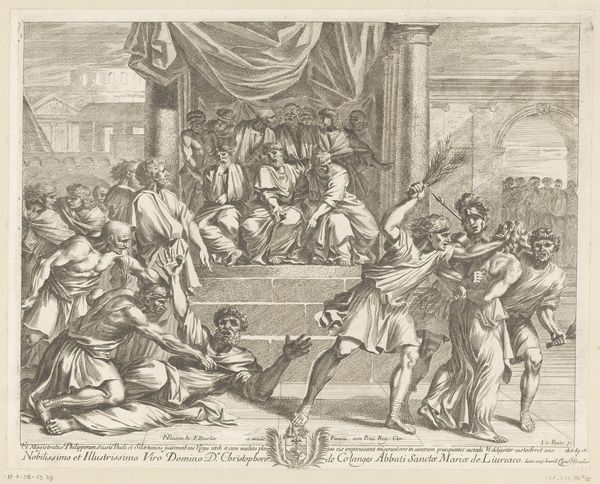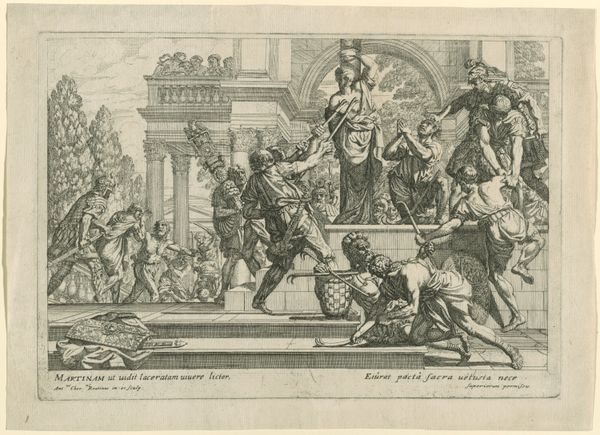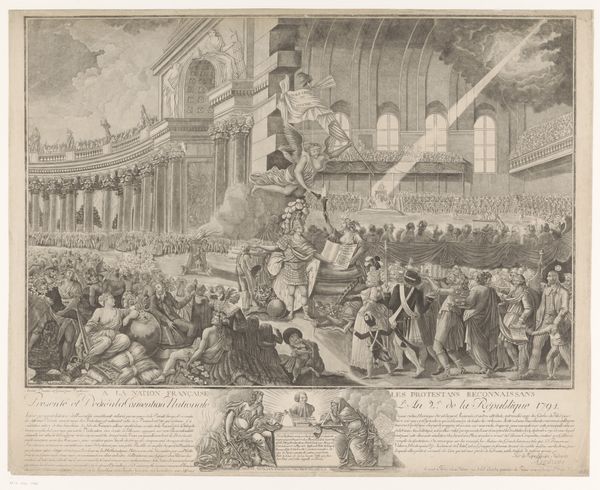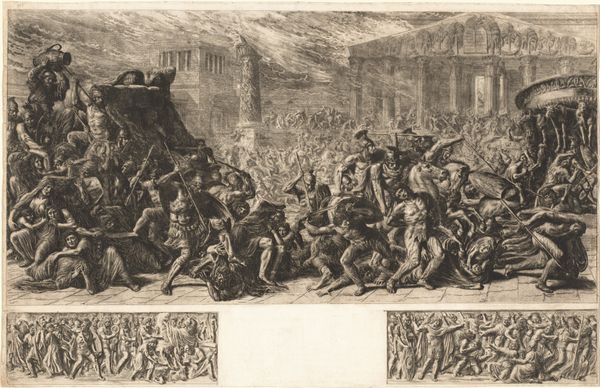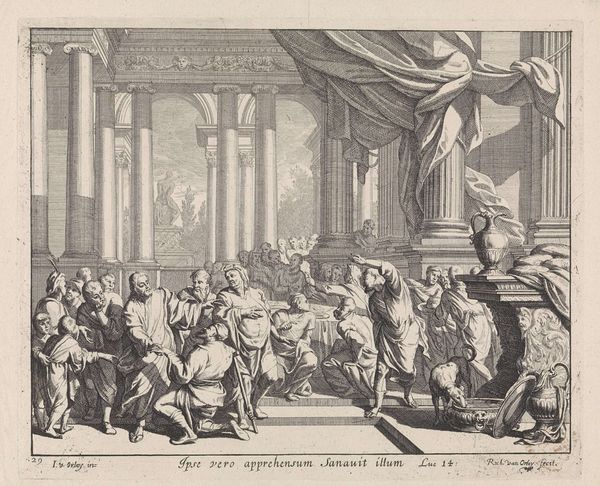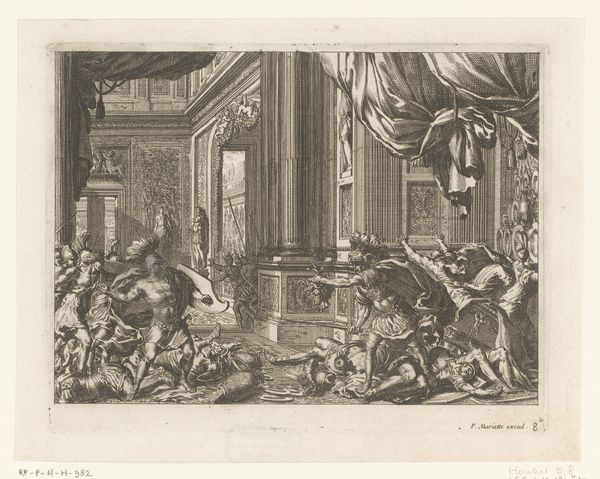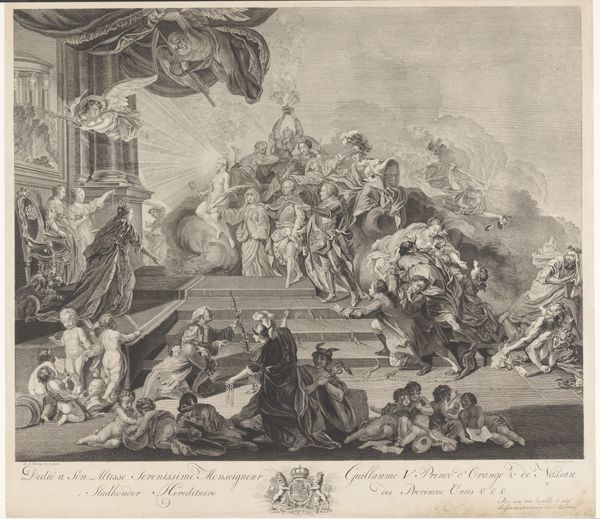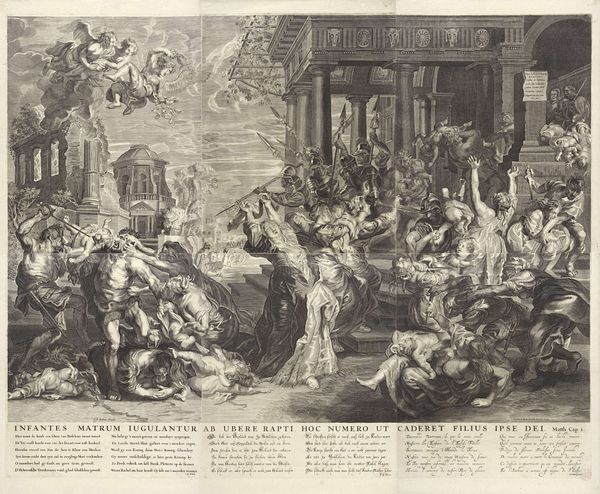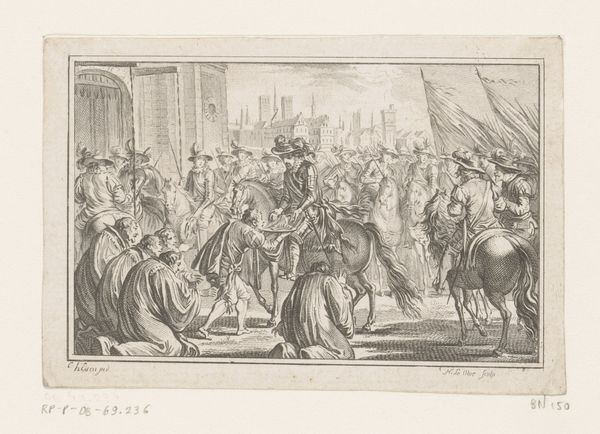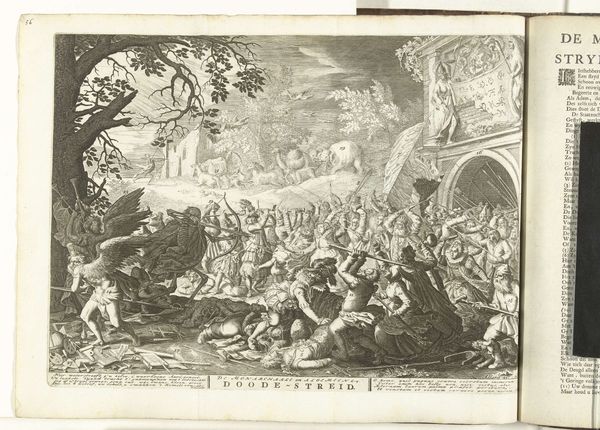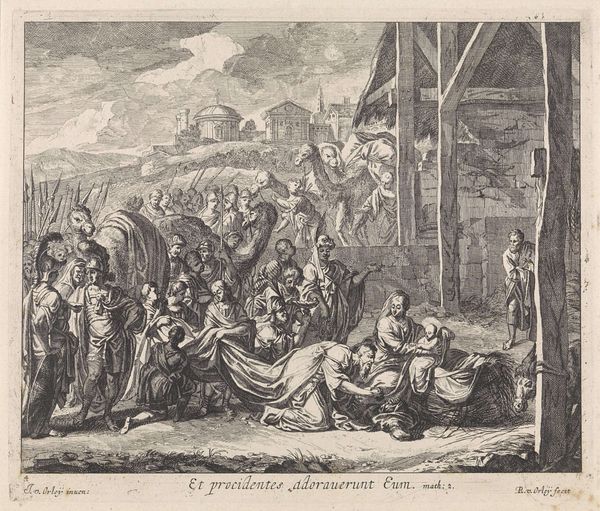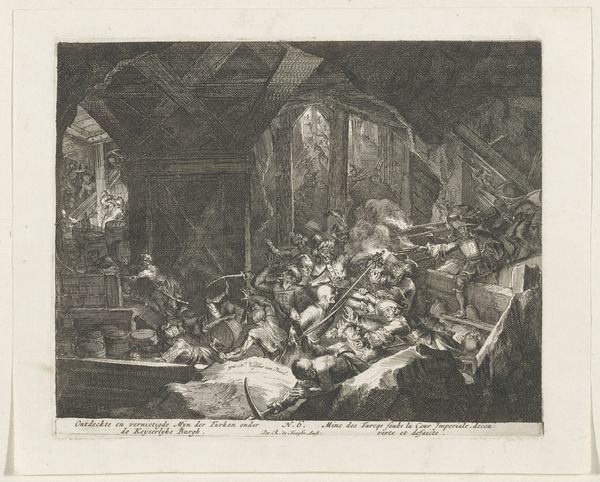
drawing, ink
#
drawing
#
netherlandish
#
aged paper
#
toned paper
#
baroque
#
ink
#
15_18th-century
#
genre-painting
#
history-painting
Copyright: Public Domain
Editor: This drawing, "Geschichte Alexanders des Großen," is by Simon Fokke, and done with ink on toned paper, sometime in the 18th century, I believe. There's so much action packed into the scene; a banquet that looks like it’s turning into a brawl! What sort of story do you think is being told here? Curator: A brawl, yes, but also something ritualistic, almost theatrical. See how the central figure on the platform, standing before the musicians, points with authority. The table itself acts as a stage. Think about the role of banquets in establishing power. Alexander's feasts were legendary – carefully staged to project not just wealth, but dominance. Notice the crowns scattered throughout the drawing. Editor: Crowns everywhere! Are they symbols of status and authority being challenged? Curator: Precisely. And consider the choice of ink on toned paper. The monochrome adds to the drama, lending the scene a sense of ancient gravitas, as if unearthed from historical records. Look how Fokke uses light and shadow to create a dynamic, almost chaotic composition. What emotions does this evoke? Editor: It's chaotic, definitely unsettling, but also there's a sense of suppressed energy, of something important about to erupt. I guess I never considered the political weight of a banquet scene before! Curator: Visual memory is long, and the symbols Fokke uses are potent. This isn't just about a historical event, it’s about the ongoing drama of power, rendered through symbolic imagery. Now, does it remind you of other images, or moments in history you have experienced through the media? Editor: That’s given me a lot to think about, especially how artists use recognizable symbols to tell deeper stories about conflict. Curator: Indeed, it is like echoing through the ages. These visual narratives about Alexander have helped build our collective memories.
Comments
No comments
Be the first to comment and join the conversation on the ultimate creative platform.
